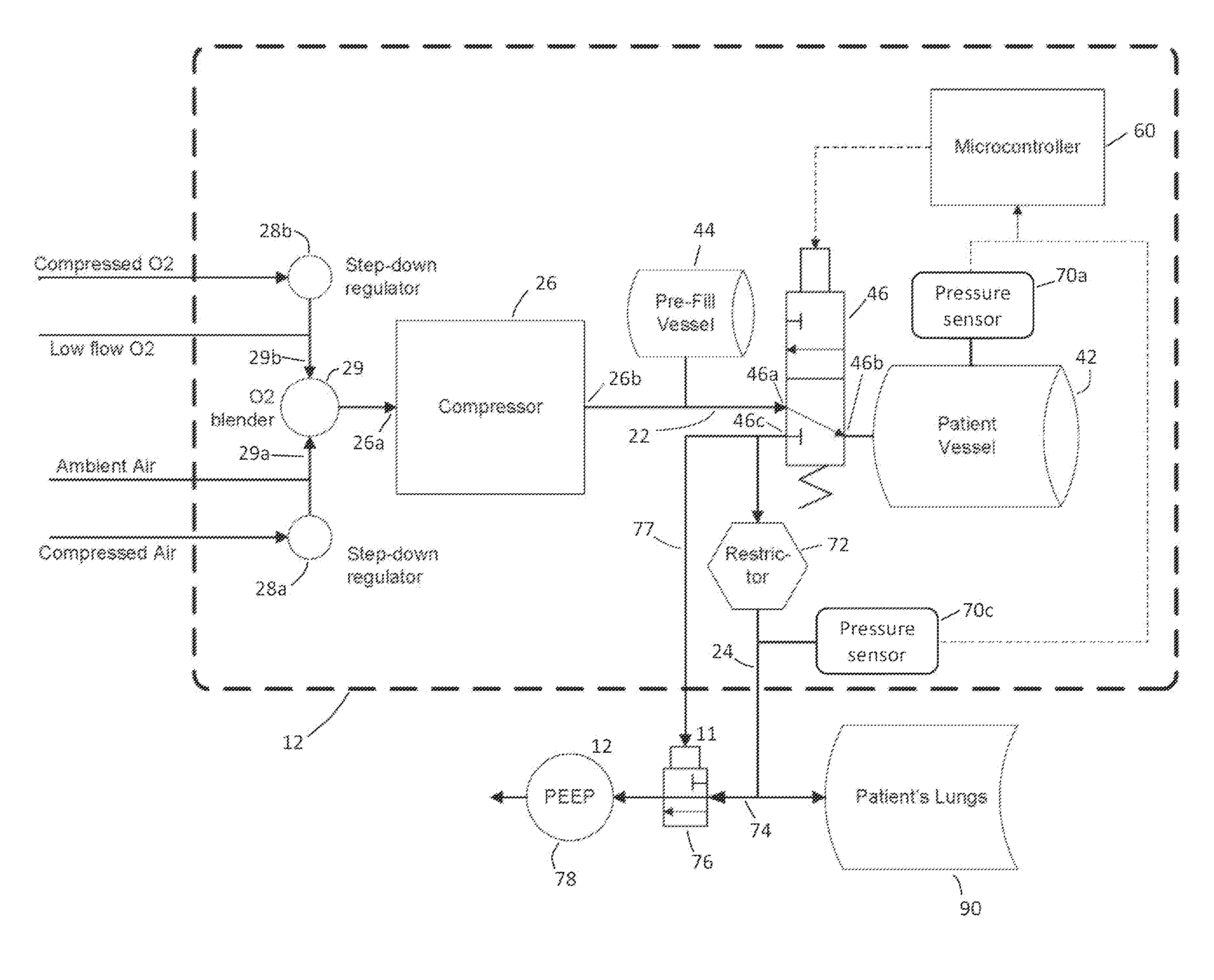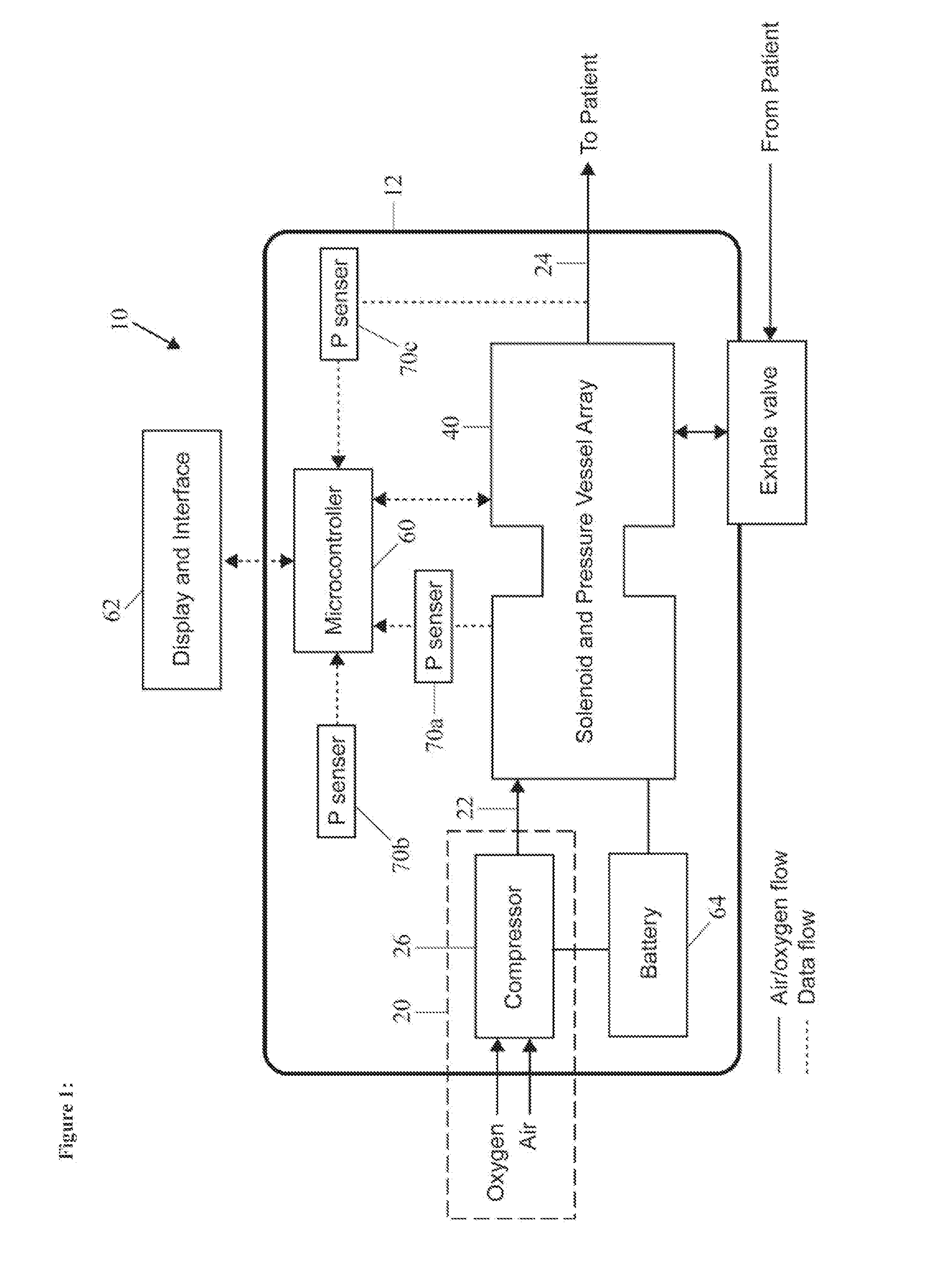Ventilation systems and methods
a ventilation system and ventilation system technology, applied in the direction of valves, respirators, mechanical equipment, etc., can solve the problems of inconvenient use, high cost, complicated use of full-featured machines, etc., and achieve the effect of inexpensive mass production
- Summary
- Abstract
- Description
- Claims
- Application Information
AI Technical Summary
Benefits of technology
Problems solved by technology
Method used
Image
Examples
Embodiment Construction
[0036]Turning to the drawings, FIG. 1 shows an exemplary embodiment of a ventilator system 10, e.g., a portable ventilator that includes a relatively light-weight housing 12 carrying various components of the system 10. Generally, the system 10 includes one or more source lines 22 that receive gas from one or more sources of pressurized gas 20 and an array 40 including one or more storage vessels and / or valves communicating with the gas source(s) 20 via the source line(s) 22 and / or communicating with an inhalation line 24, e.g., for delivering gas to a patient, as described further below. For example, as shown in FIG. 2, the array 40 may include a valve assembly 46 including one or more valves communicating with one or more storage vessels 42. The system 10 may also include one or more controllers 60 coupled to the array 40, e.g., for operating one or more valves of the array 40, to one or more sensors, e.g., pressure sensors 70 that provide pressure data from one or more components...
PUM
 Login to View More
Login to View More Abstract
Description
Claims
Application Information
 Login to View More
Login to View More - R&D
- Intellectual Property
- Life Sciences
- Materials
- Tech Scout
- Unparalleled Data Quality
- Higher Quality Content
- 60% Fewer Hallucinations
Browse by: Latest US Patents, China's latest patents, Technical Efficacy Thesaurus, Application Domain, Technology Topic, Popular Technical Reports.
© 2025 PatSnap. All rights reserved.Legal|Privacy policy|Modern Slavery Act Transparency Statement|Sitemap|About US| Contact US: help@patsnap.com



